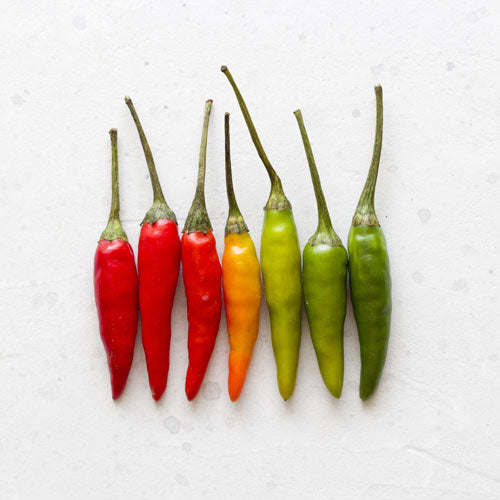
The New Year has come to resemble the movie “Groundhog Day.” Every year we make a list of the same resolutions that we really mean to keep -- lose weight, spend less, exercise more and the list goes on. And every year we do all of that for about three weeks until we resume our bad habits and start the cycle over again next January 1.
But this year is different. The COVID-19 pandemic has made us more aware of how fragile life is and how important it is to maintain our one-and-only bodies. We’ve become more serious about establishing the practices that will result in good health, and one of those is eating hot peppers.
The reason is that capsaicin, the substance that gives peppers their punch, has been proven to offer many health benefits. It boosts metabolism, which reduces your appetite and helps burn calories -- both good news since the No. 1 resolution on people’s lists is often slimming down.
And while looking great and having more energy are certainly pluses, a slimmer you also means you’re less likely to have diabetes, heart attack or stroke -- and to die early because of them. Researchers at the University of Vermont say your chances of living longer because of peppers is an impressive 13%, and they predict that hot peppers might one day become a dietary recommendation. Capsaicin also helps lower LDL, or “bad” cholesterol, thus further reducing the chances of developing those serious conditions along with the hypertension and atherosclerosis that can lead to them.
Contradictory as it sounds, hot peppers can also help your digestive system by creating a substance called anandamide that lowers inflammation in the stomach. They also help curtail other digestive issues such as gas, diarrhea and cramps. Since they are high in antioxidants, they can help prevent intestinal tumors. In fact, The American Association for Cancer Research reports that capsaicin can also kill cancer cells in leukemia and prostate cancer.
The same vitamin A and vitamin C in the red and yellow bell peppers you put into your salads and fajitas are also in chili peppers. This means that the health benefits you get from those are also present in their hotter cousins. Chili peppers can help build immunities against infections and reduce the number of colds you suffer. Vitamin A can also improve eyesight and prevent macular degeneration and blindness. The vitamin C helps create and maintain collagen, so the new, thinner you can also have more beautiful skin and shinier hair.
A study done by the American Academy of Neurology indicates that the capsaicin in the peppers can reduce migraine pain, and it has also been shown to delay the onset of arthritis symptoms. It inhibits substance P, the neuropeptide that causes inflammation, so it can be used to treat shingles, arthritis and other types of pain since it desensitizes pain receptors over time.
Peppers are rich in copper and iron, so they are instrumental in creating new blood cells and consequently to reducing anemia and fatigue. They also increase blood flow to the brain and possibly inhibit diseases such as Alzheimer’s.
But beyond all these tremendous advantages, hot peppers just make food taste better, adding the flavor and zest we all crave to everything from pasta and pizza to chocolate and coffee. Scientists who study the effects of what we eat on our overall well-being agree, however, that a healthy diet containing lots of fruits and vegetables is the starting point. Dousing junk food with hot peppers is not going to do the trick, but good food with a pepper kick can provide all kinds of healthy advantages.



Why is it that we can’t leave a perfectly fine bowl of pasta, slice of pizza or a pile of scrambled eggs alone?
Tony Winders
Author